
Understanding Supply Chain Management in 10 basic trends
However, it appears that the best way for managers to keep an up-to-date view of the subject is to have a clear understanding of the main trends shaping the business environment. Thanks to this exercise, we clearly see how the essence of Supply Chain management, a systemic approach including vision sharing and animation principles, is essential to face all emerging challenges.
# 1 Value chain Schemes Imply Increasing Complexity for Business Management
The Key Subject?
- Complexity
Elements of Understanding?
The complexity of a system is generally defined by the inability for a given actor to correctly and fully understand:
- The surrounding environment
- Understanding other actors in this environment
- The nature and purpose of actions carried out by other actors
Complexity is Inherent in Every Globalized Organization Today
Globalization and booming international trade have transformed Supply Chains into a giant juxtaposition of players contributing more or less to the creation of value for customers. A simple mapping exercise reveals how complex the Supply-Chain has become.
A complexity clearly identified in the nature of the challenges that Supply Chain Managers face in the execution of daily operations. From strategic to operational levels, the subjects assessed further push the discipline of Supply Chain Management.
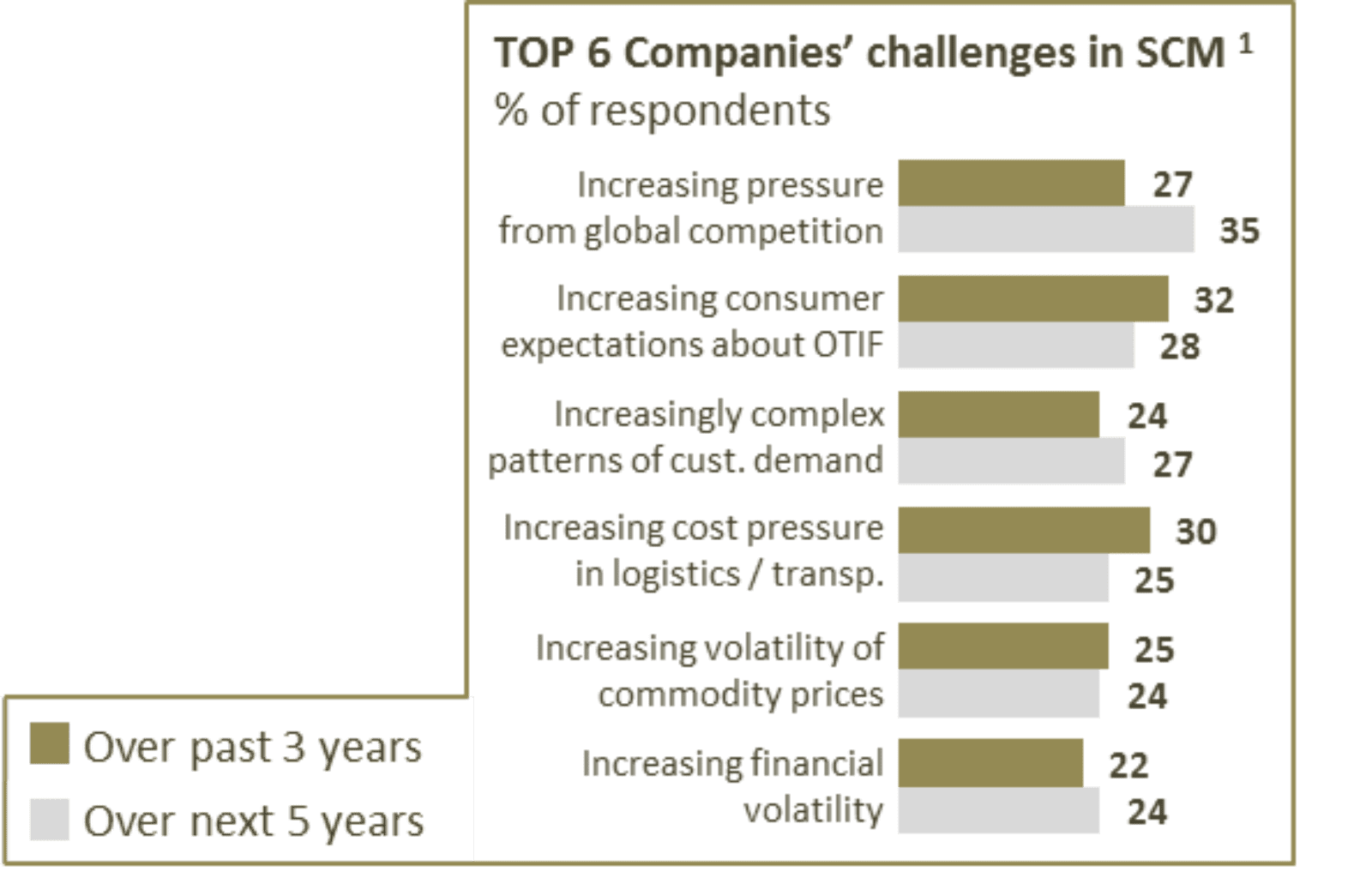
Knowing that in recent years, the evolution of consumer needs has largely contributed to the multiplication of these challenges ...
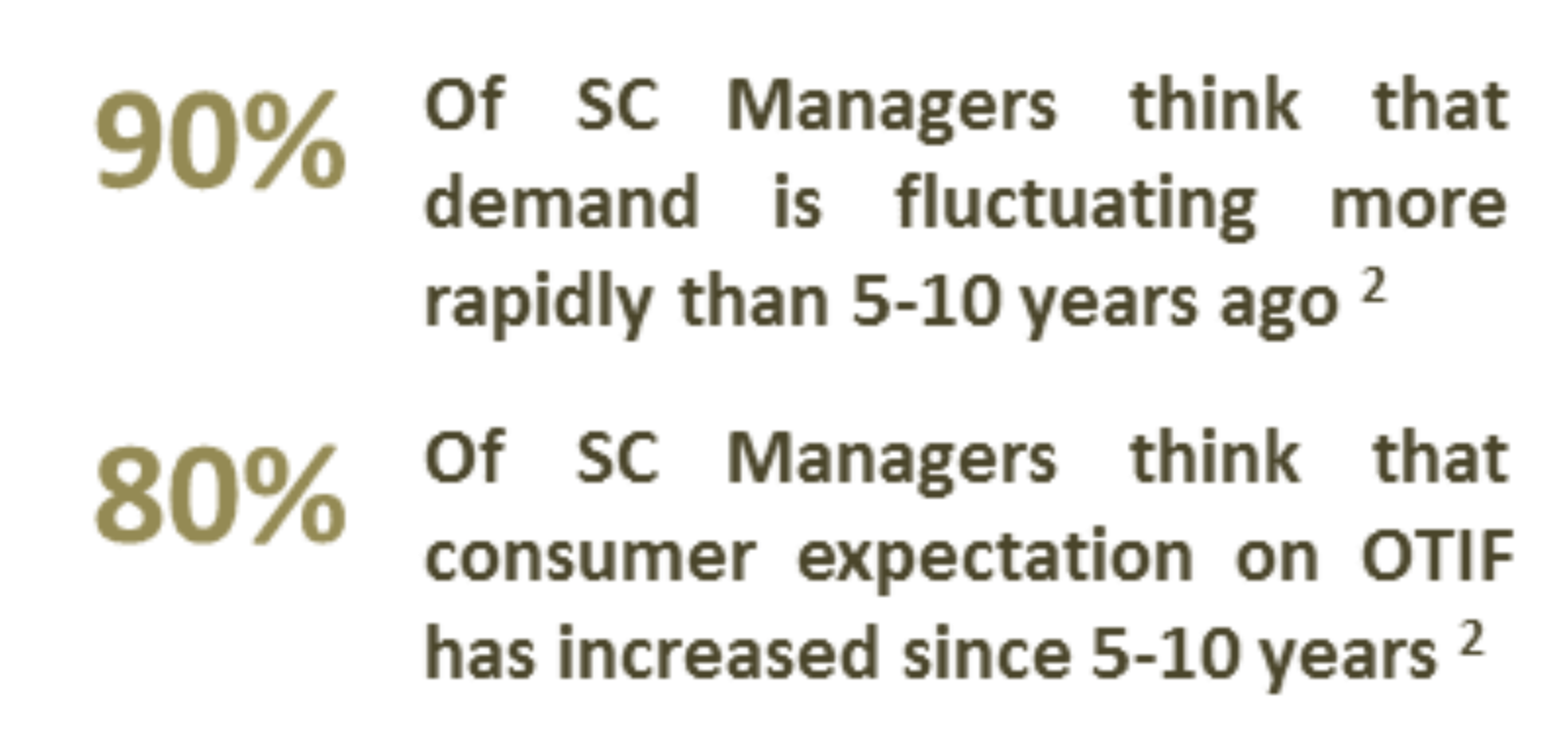
... this implies higher risks for business activities. Numerous actors involved and interactions generated, combined with higher expectations on the customer side (BtoB and BtoC taken together) have extended the exposure of the globalized supply chain to various risks.
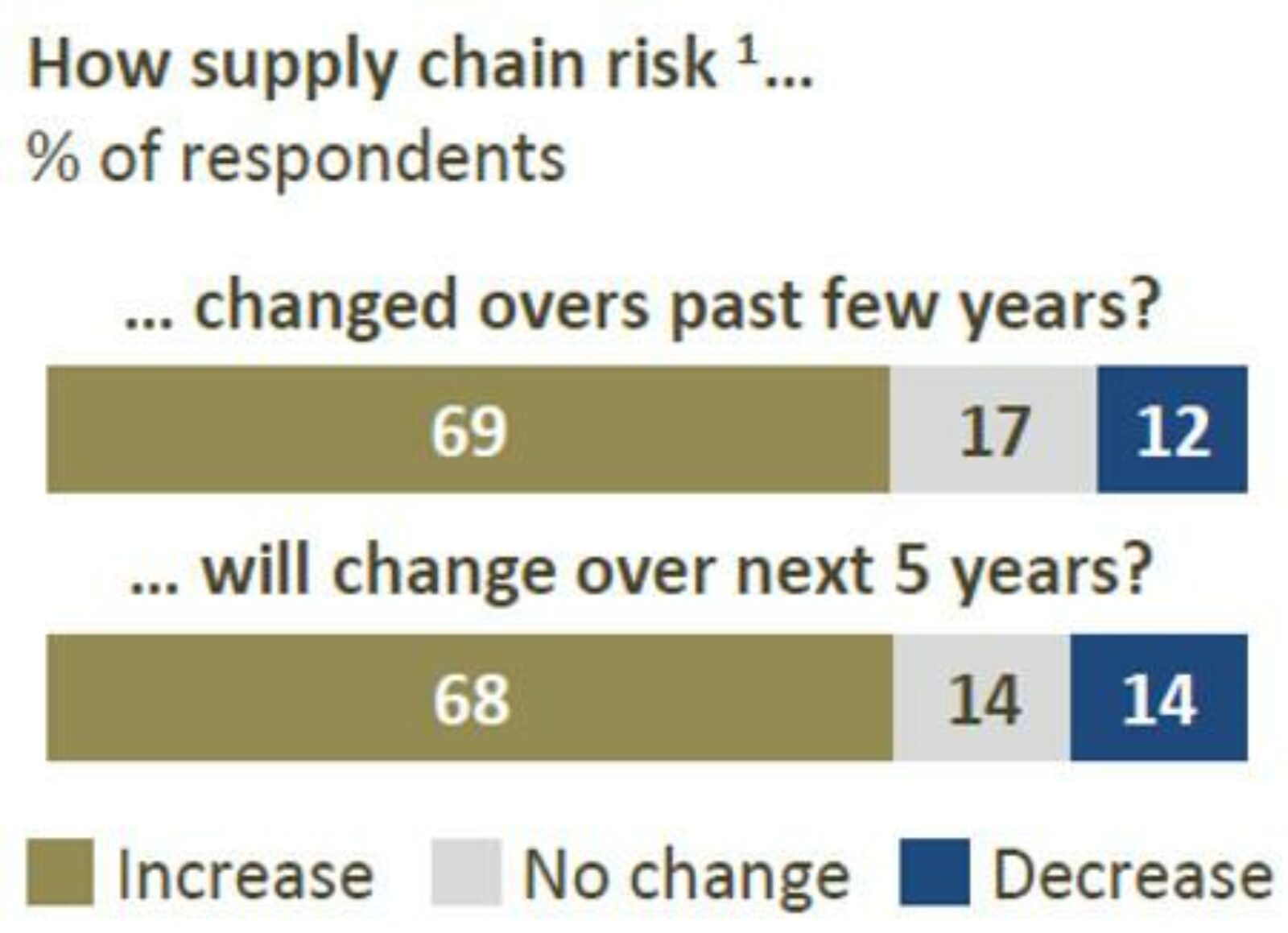
Among these risks, the disruption scenario is the most sensitive according to Supply-Chain Managers.
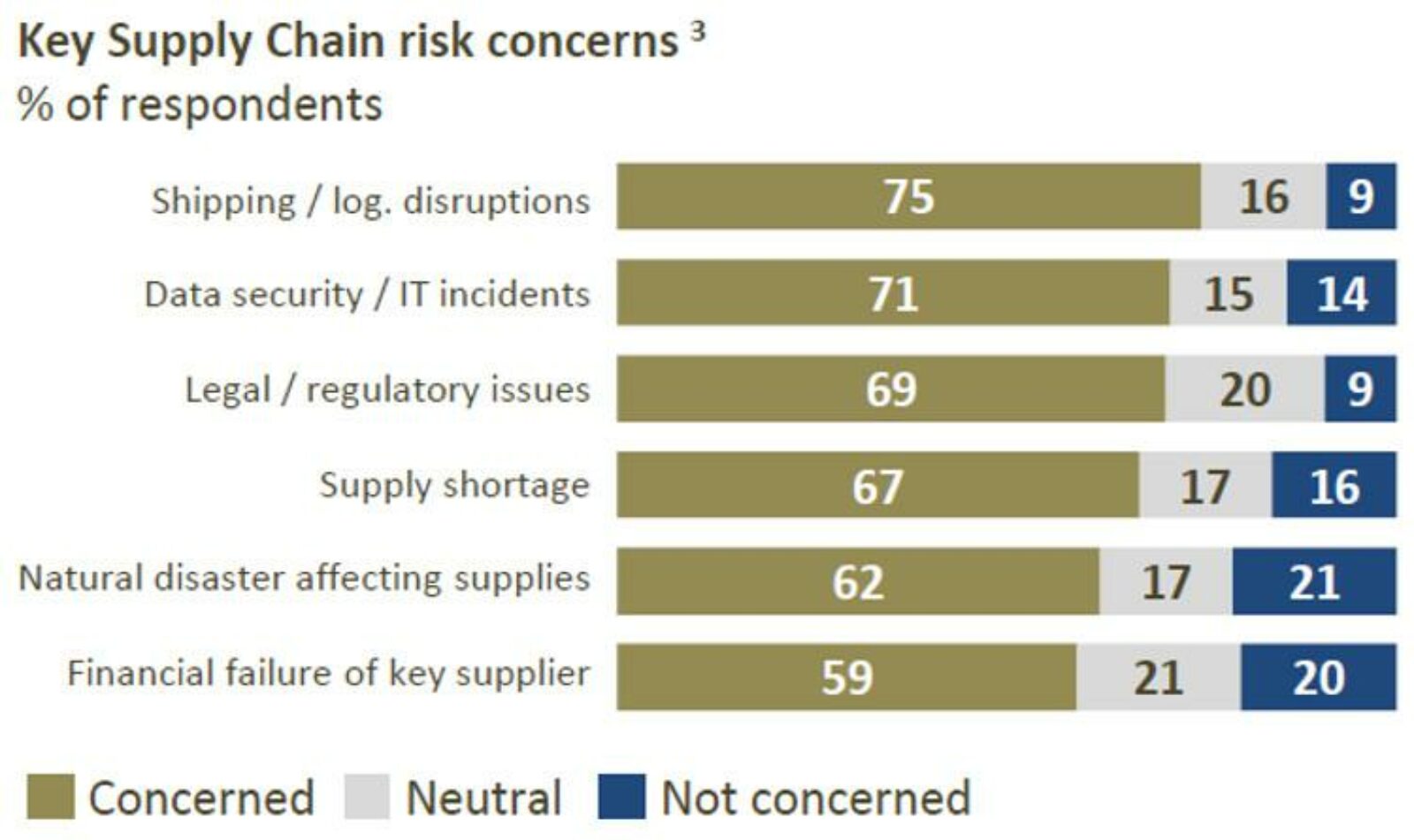
Sources: 1: Global Survey, Mc Kinsey, 2010/ 2: Supply Chain Impact Survey, Cap Gemini, 2013/ 3: Future of Supply Chain, SCM World, 2016
# 2 The Need for Flexibility, Responsiveness and Coordination Make Old Models Obsolete
The key Subject?
- Flexibility, Responsiveness and Coordination
Elements of Understanding?
Faced with the challenges of the 21st century, the best Supply Chains are those which can combine:
- The ability to deal effectively with variability in demand (flexibility)
- The ability to be responsive and to shorten the lead time (responsiveness)
- Each function on the same level of Operational Excellence (coordination)
The response methods used by the old models appear here clearly outdated.

The potential contribution of the basics of supply chain management is still underestimated
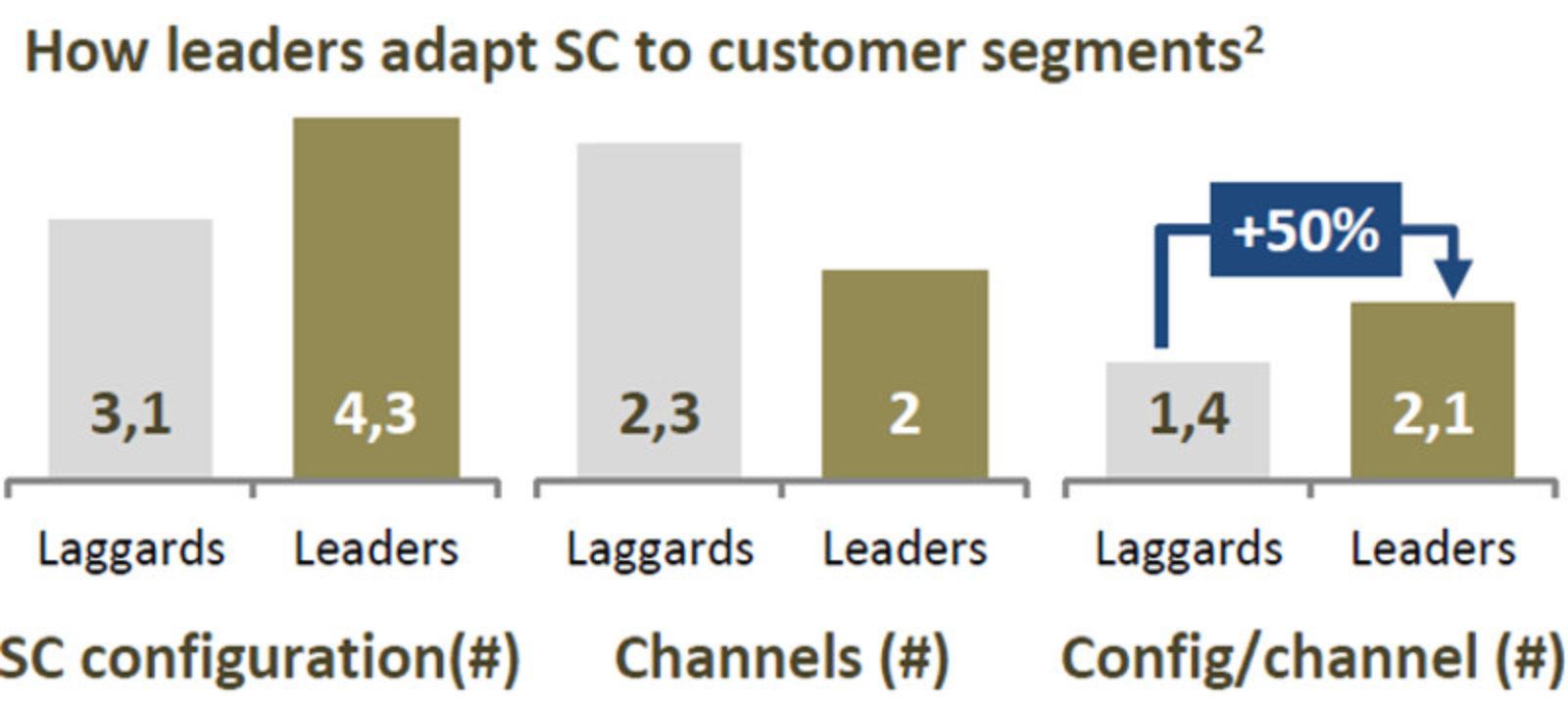
This lack of vision at the senior management level penalizes the implementation of disruptive scenarios. And the day-to-day execution of processes becomes a firefighter's job, which does not allow the design of effective and relevant responses to business challenges.
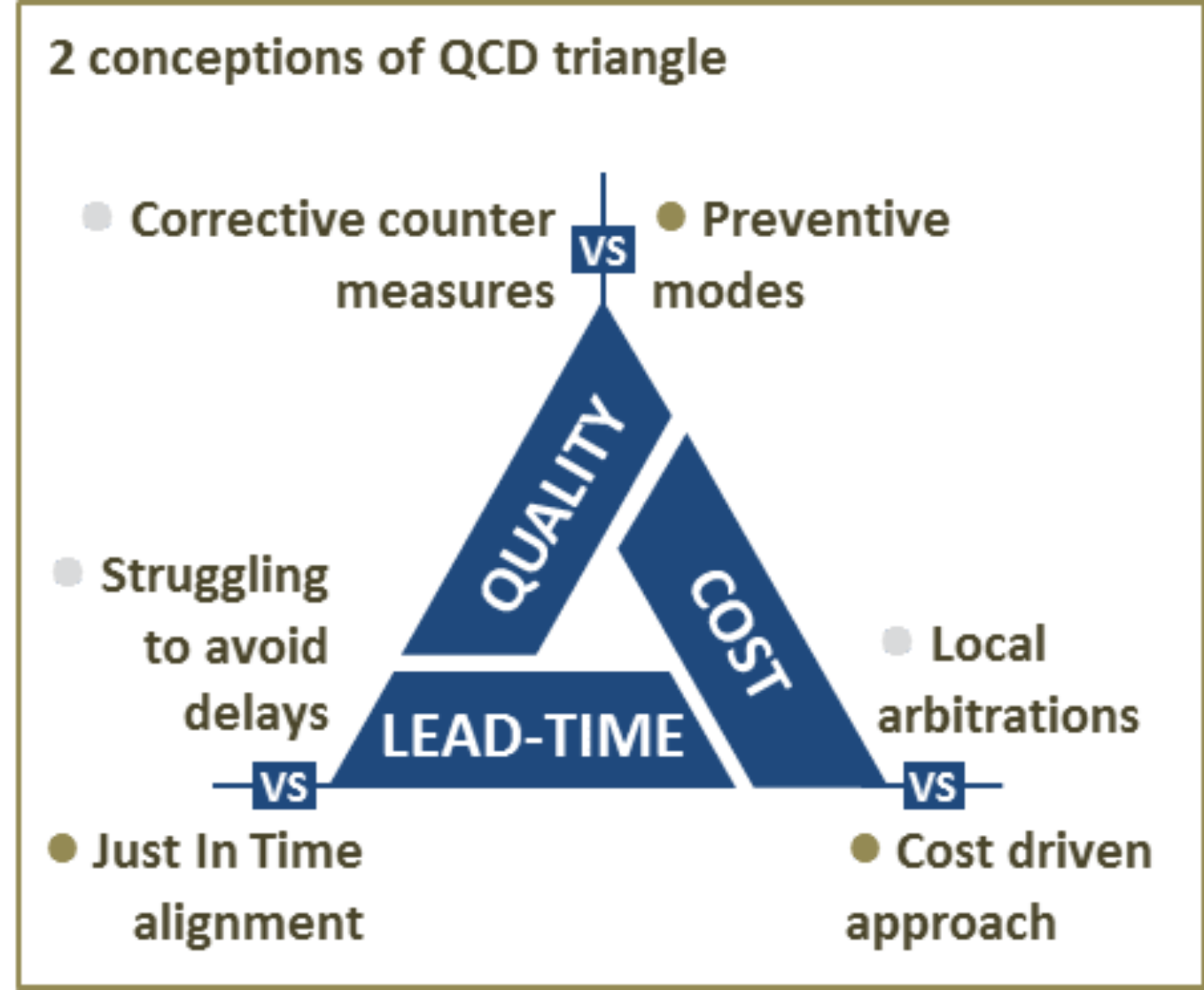
This design has an impact on process efficiency and reduces supply chain performance
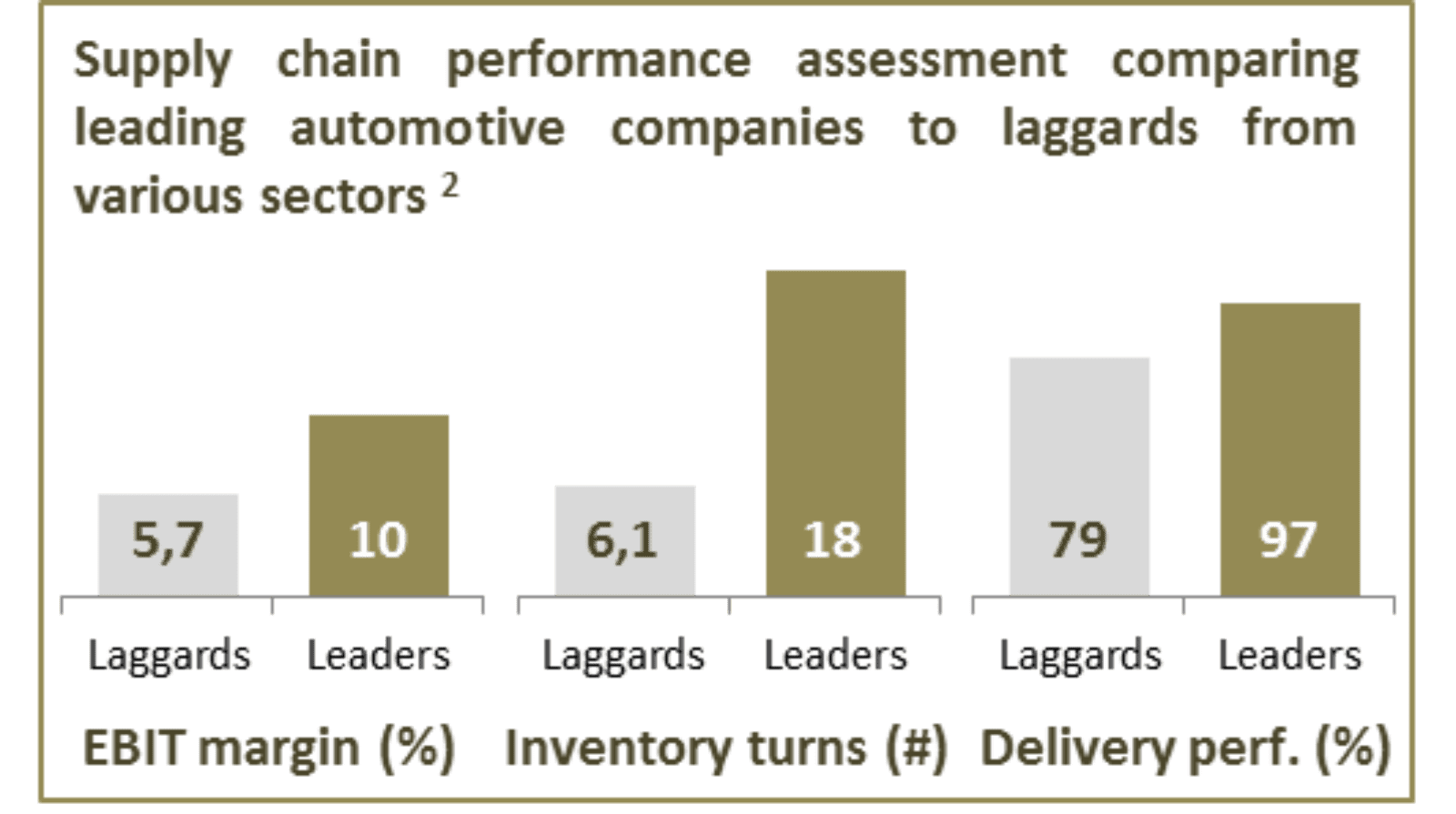
Sources: 1: Future of Supply Chain, SCM World, 2016 /2: Global Supply Chain Survey, PwC, 2013 / 3: Supply Chain Impact Survey, Cap Gemini, 2013
The comparison between outdated models and the most successful players demonstrates the constant impact of an under-efficient supply chain on business performance.
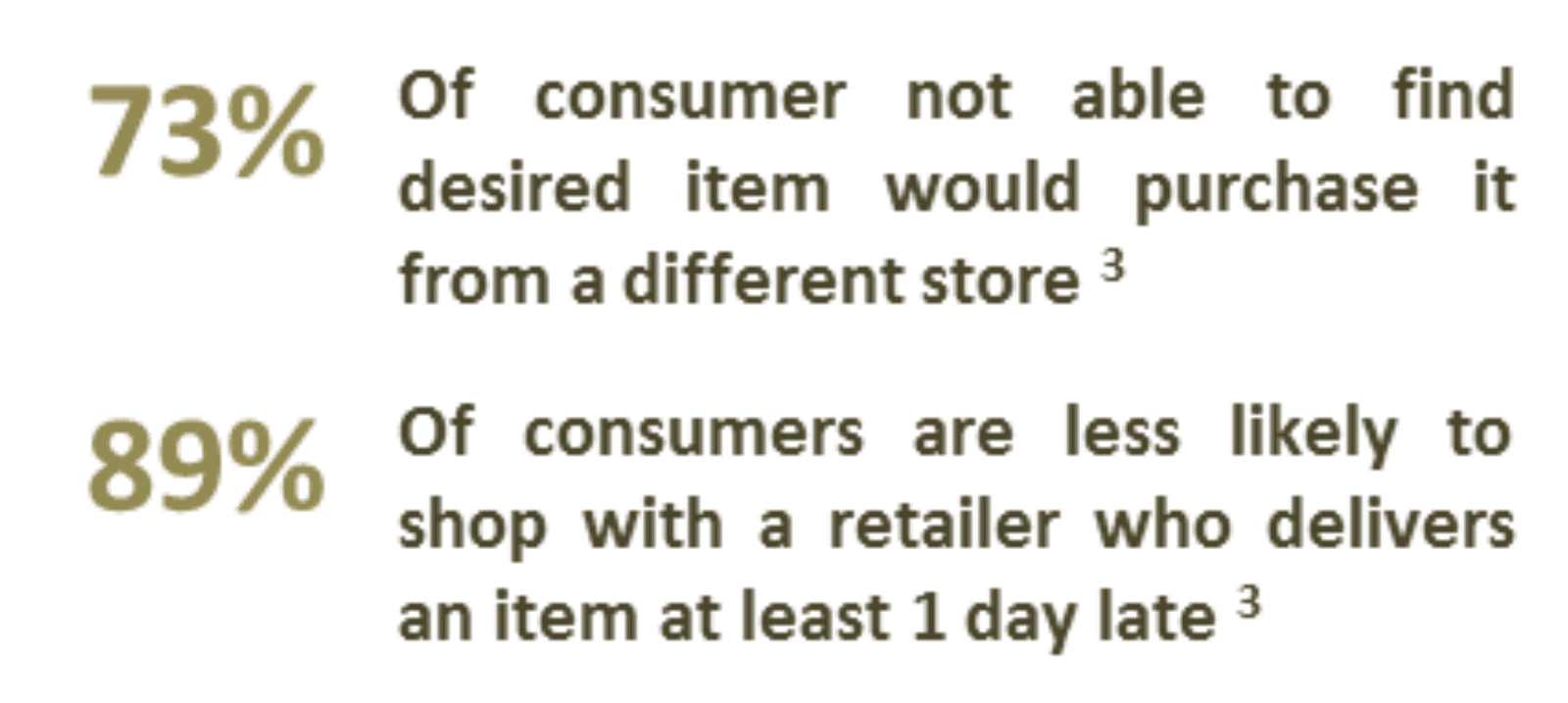
It also carries a significant risk of losing customers disappointed with the service.
# 3 The Technological Revolution Acts as a Trend Amplifier
The key Subject?
- Révolution Technologique
Elements of Understanding?
Late technological developments have an impact on the Supply Chain professions on two distinct axes:
- Information management (digital revolution on the tools themselves and mastery of data with Big Data analytics or the development of blockchain technology, for example …)
- A reorganized process (mainly linked to the democratization of advanced technologies in robots, automated …)
New technologies at the center of high expectations for Supply-Chain Managers
Supply Chain Managers rely entirely on recently developed tools to support the performance of the Supply Chain. These new technologies are powerful for increasing the level of animation within the SC (systemic approach, customer centricity, management systems, performance monitoring, etc.).
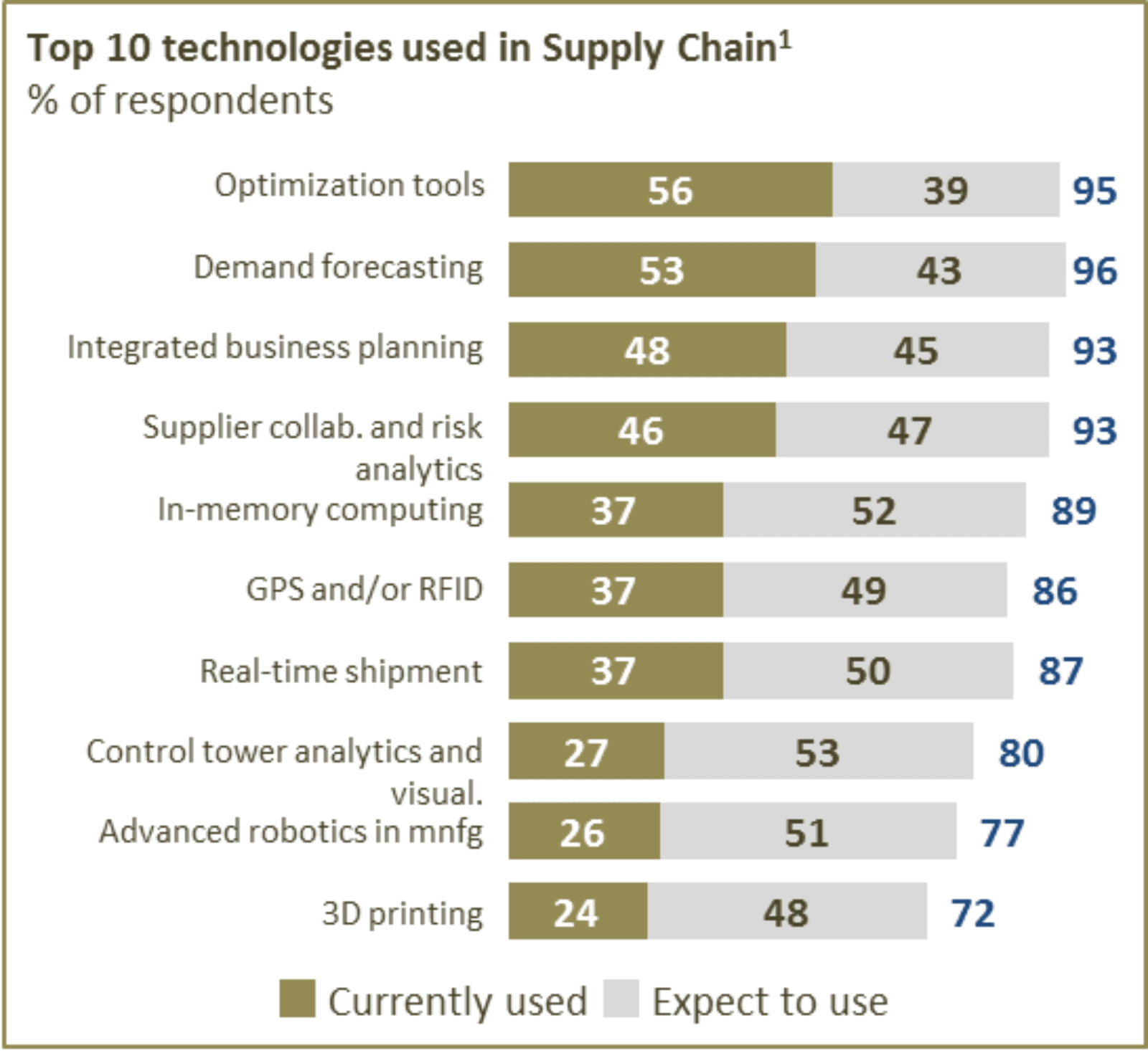
Among all the tools offered, some are particularly considered as breakthrough innovations
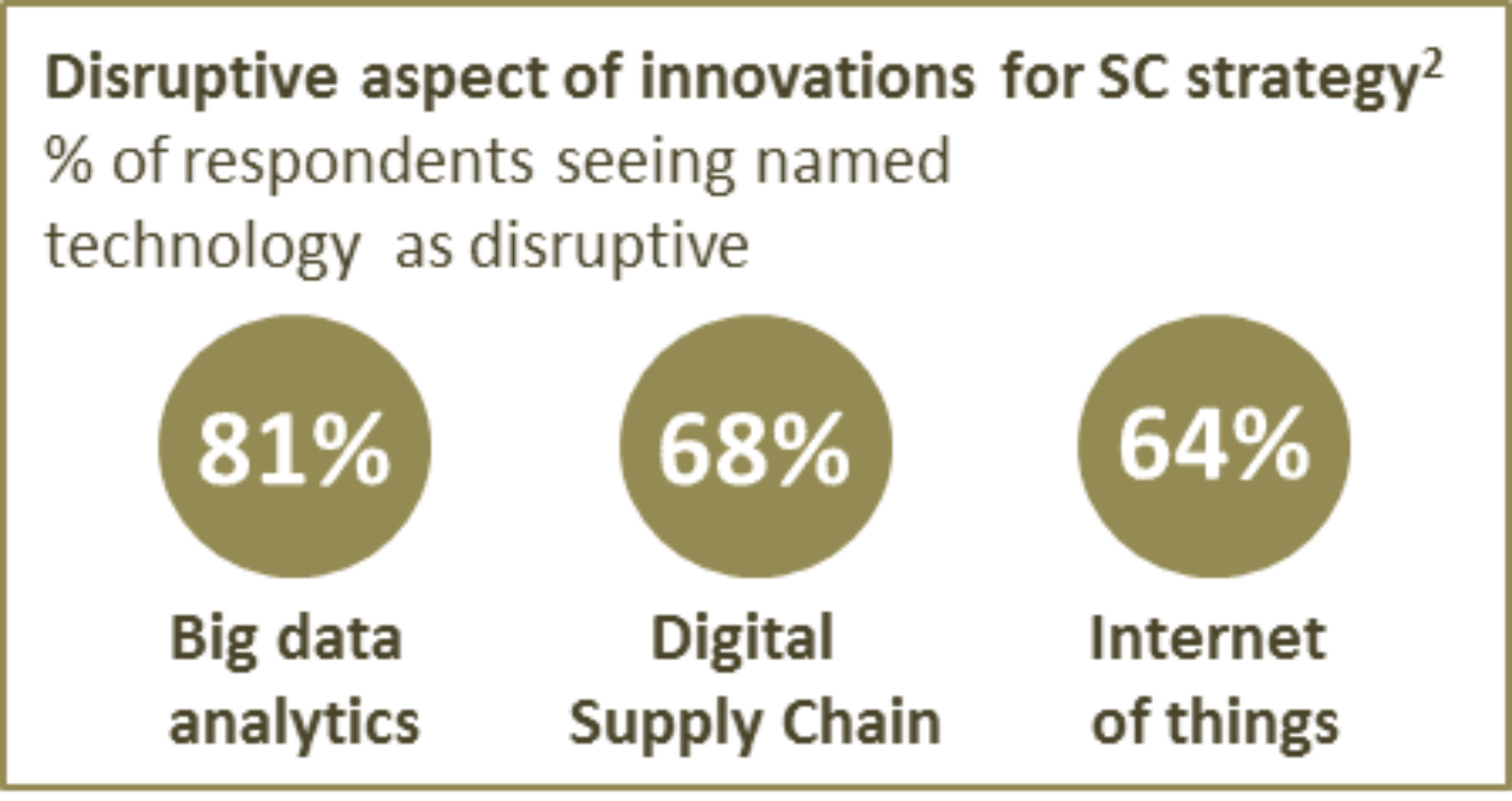
The level of membership varies according to the activity sectors and the nature of the existing issues (pressure on quality, costs or time, etc.)
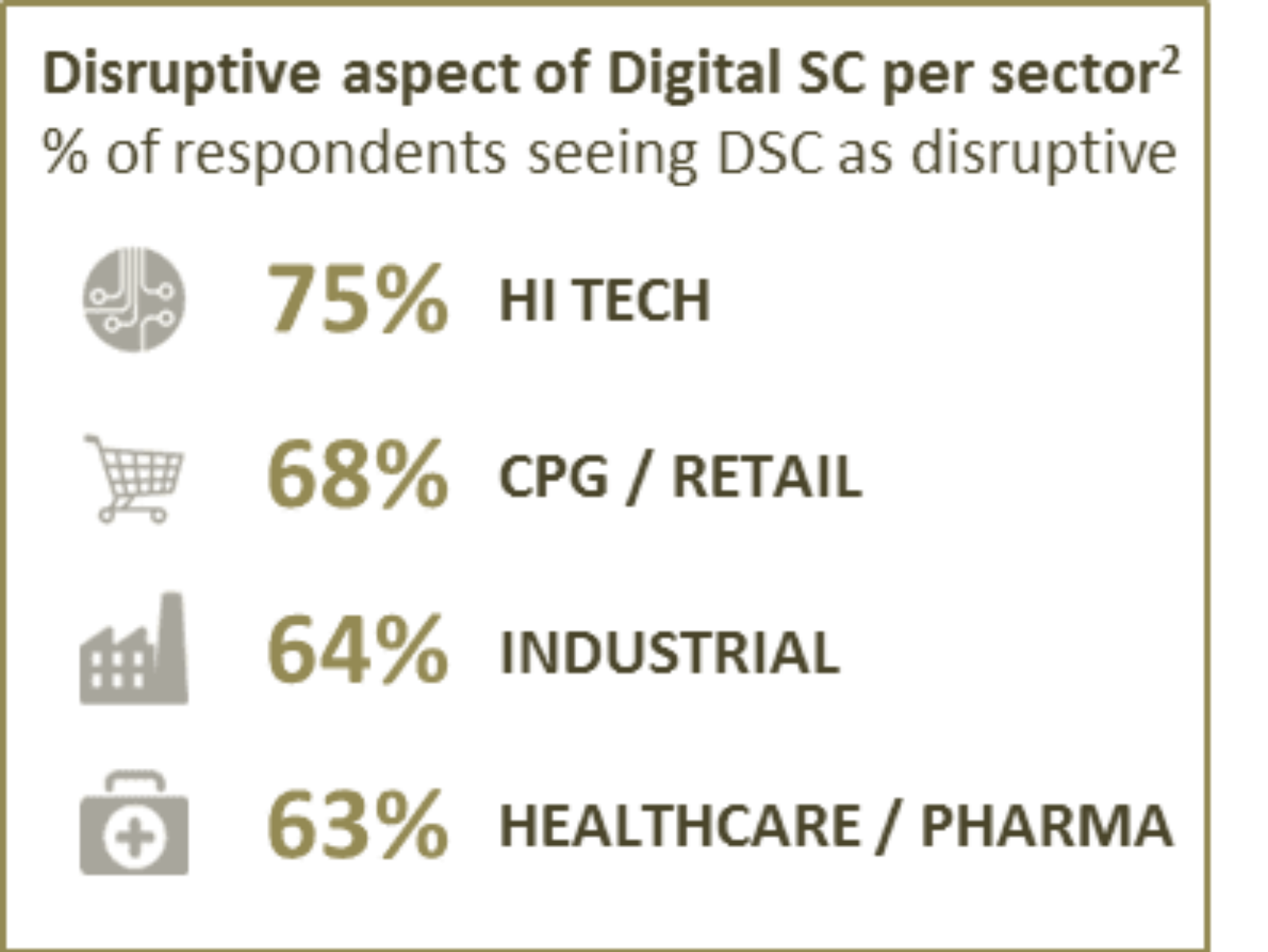
And they help to undermine the definition of Supply Chain
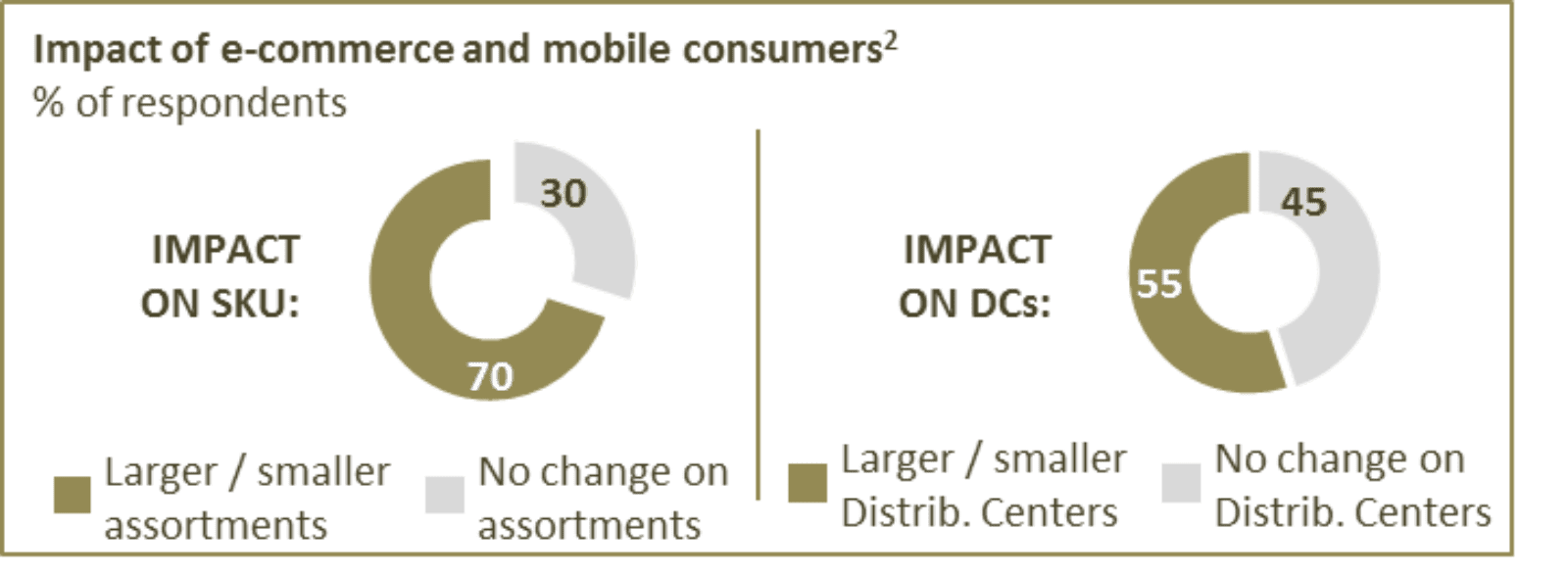
Sources: 1: Supply Chain talent of the future, Deloitte, 2015 / 2: Future of Supply Chain, SCM World, 2016
New technologies thus offer the customer entirely new access to the offer, in return generating multiplier scenarios with high variability and changing the way of approaching Supply-Chains.
These first three trends are obvious.
# 4 Operational Excellence is a Powerful Approach for the Implementation of the Transformation Plan
The key Subject?
- Operational effectiveness
Elements of Understanding
Operational Excellence is the modern variant of Lean Manufacturing designating the Continuous Improvement state of mind used to refocus activities on the added value expected by the customer.
Coming from the automotive sector, it revolves around 3 axes:
- Stability of processes (waste recovery, redesign process, etc.)
- Integrated quality (standardization, error prevention, etc.)
- Just In Time (continuous flow, closed loops, takt time mngt …)
Profitability is a major concern in monitoring the performance of the Supply Chain
The main contributor to operating costs, the Supply Chain directly controls the operating margin of companies. Evaluating, challenging and reducing these costs is now a daily concern for managers.
Various areas for improvement can be assessed using the Lean toolbox.
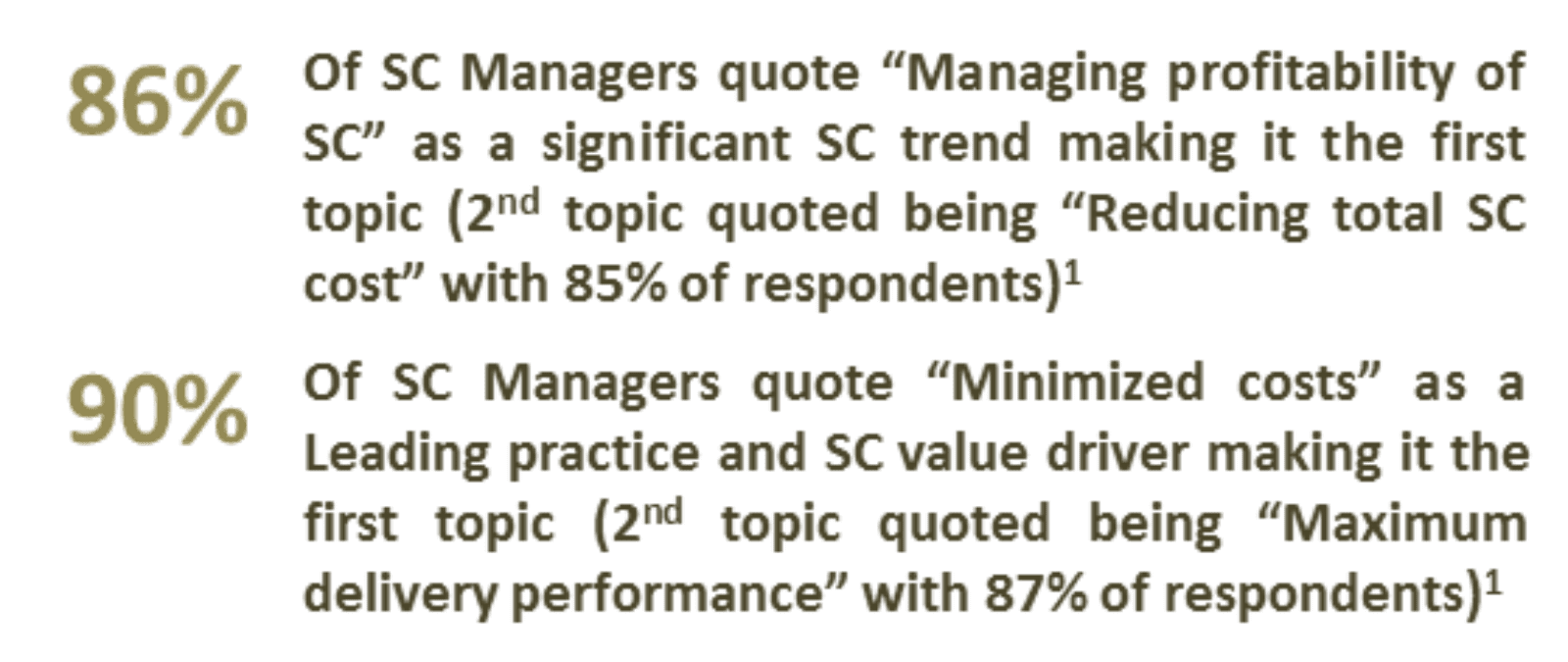
The Operational Excellence methodology is now widely used to improve this profitability A large part of the organizations have at least a first knowledge of the Operational Excellence toolbox. The most advanced maintain a constant pace for the implementation of new workshops.

They mainly used OE as a turnkey methodology to improve process efficiency and introduce a new mindset regarding people development
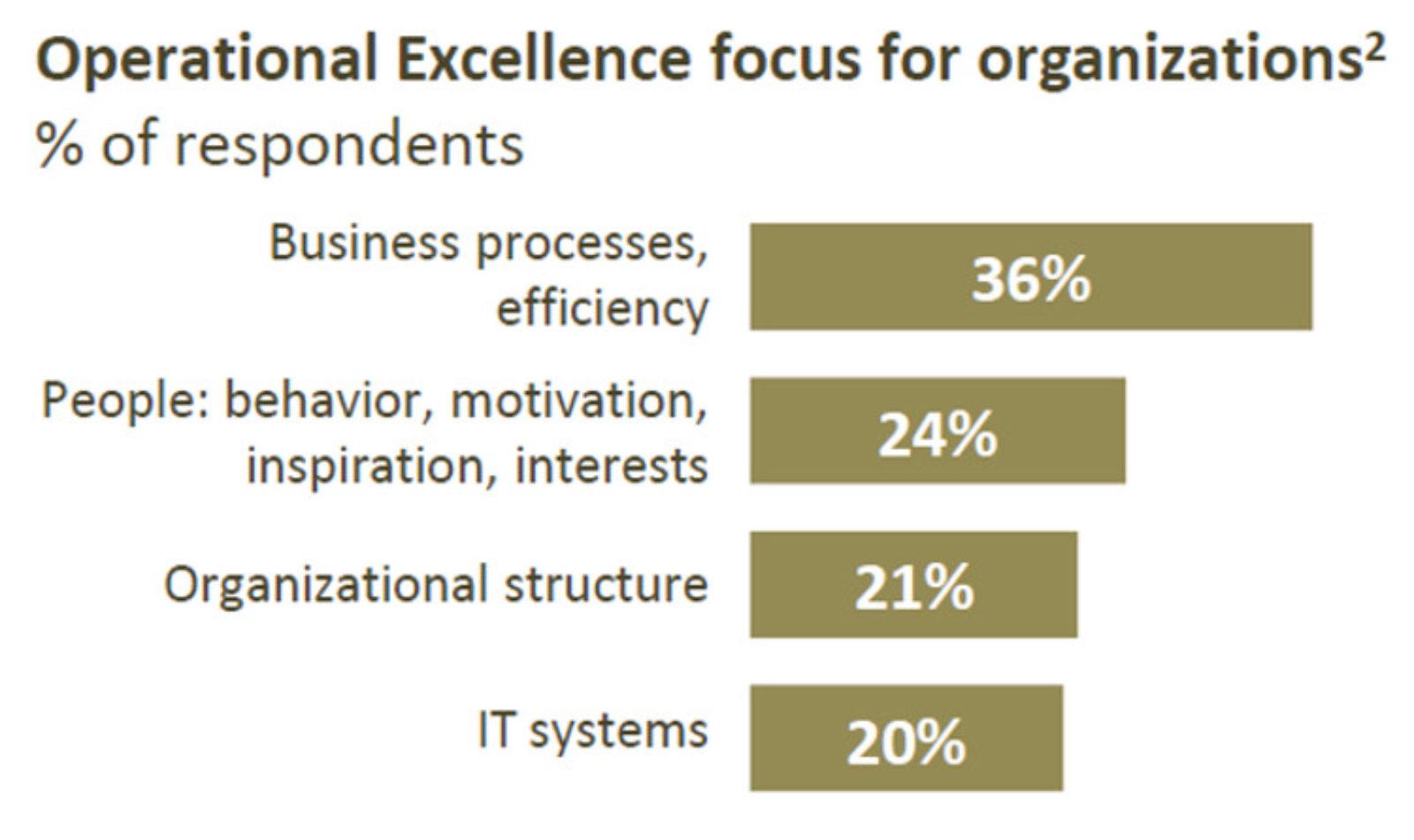
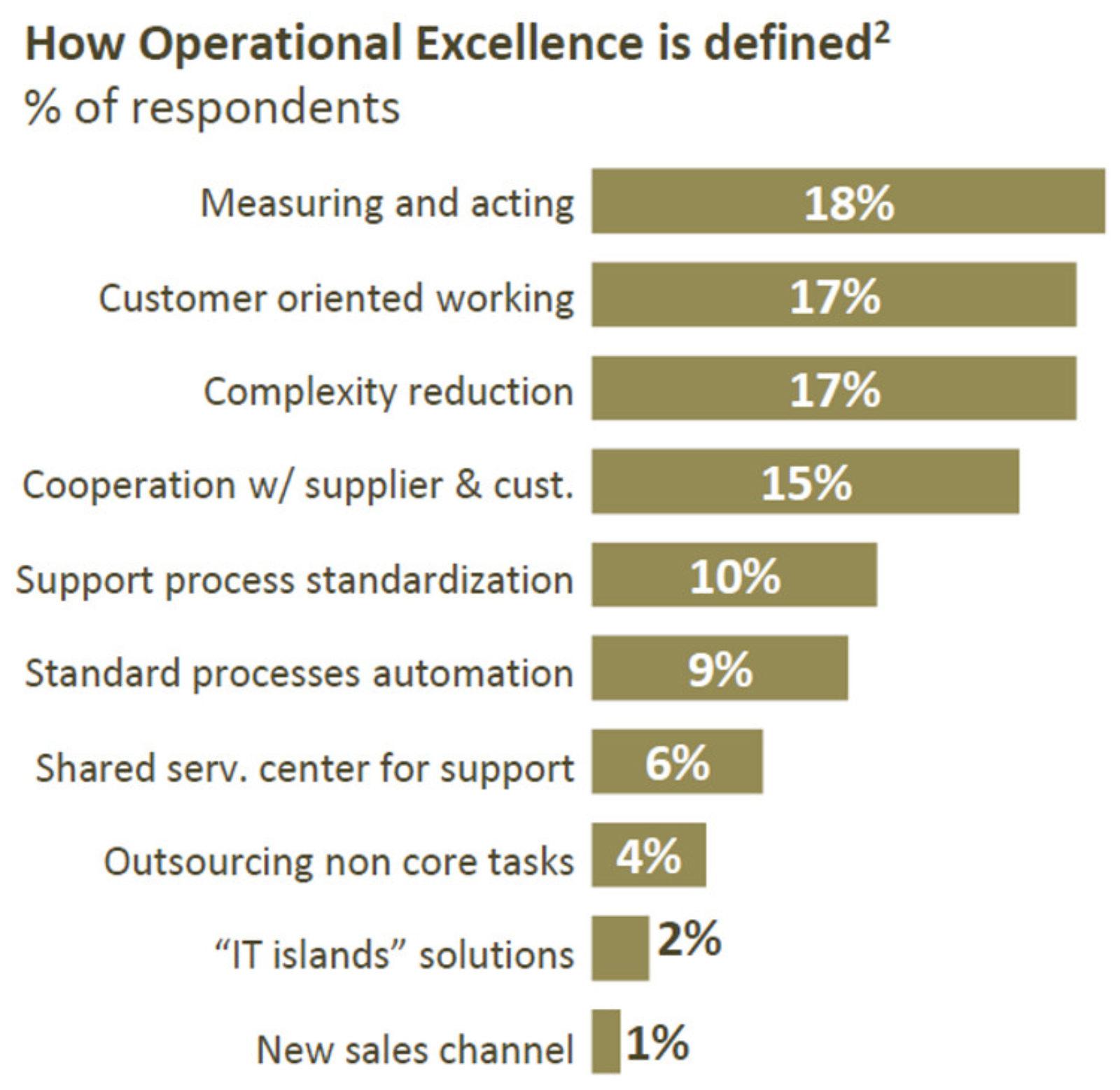
Sources: 1: Global Supply Chain Survey, PwC, 2013 / 2: International operational excellence survey, Eurogroup Consulting, 2013
# 5 Perfectly Aligned Business Models Are at the Top of Best Practices
The key Subject?
- Business model
Elements of Understanding
A Business Model essentially defines a high-level strategy to be deployed by a brand to generate revenue. This model directly influences the state of mind of the organization and influences the performance of the Supply Chain.
The most advanced players (Amazon, Ikea, Zara …) display higher performance thanks to economic models integrating the Supply Chain as a structuring element of their DNA.
Supply Chain Best Practices Have All Developed an Easily Recognizable Model

Secteur : E-commerce
Position : “The world’s largest internet retailer”
2015 turnover: 107b $
2015 workforce: 231,000
A glance at the business model:
Always looking for innovation to gain market share, test new markets and / or drastically reduce prices for customers. Started from selling books in 1994 and gradually spread to become one of the Internet’s Big Four along with Apple, Google and Facebook. Now in the position of the 1st non-food retailer in several large countries.
Supply Chain Alignment:
The Supply Chain supports the profitability model by implementing the best processes. The overall strategy includes the needs for expanding logistics capacity. It leads to the most advanced inventory management rules in warehouses, to tests of drones for transport, etc.

Sector: Distribution of furnishing articles
Position: “World leader in multi-channel furniture”
2016 turnover: 34.2b €
Workforce: 164,000
A glance at the business model:
Build a complete model for maximizing the customer experience in the furniture market (good value for money, creating a shopping experience). This business model has become a case study for marketing students around the world.
Supply Chain Alignment:
IKEA was first successful in adapting item development within the corporate environment (short time to market, design to logistics …) while capturing changing customer expectations . Second, the SC has always supported business and profitability needs (successful multi-channel implementation, pooling of supply for key subcomponents …).

Sector: Clothing distribution
Position: “A worldwide distribution group”
TO 2016: € 23.3b
Workforce: 153,000
A glance at the business model:
The management of the ranges is at the center of the organization with a rotation of the collections every 15 days, divided by 4 compared to the competitors (1 month vs 4). ZARA is the creator of the Fast Fashion approach which is at the origin of the success of the brand (only 18% of the articles have to go through the sales against the double for the competitors).
Supply Chain Alignment:
the footprint is fully designed to meet market needs. Only permanent collections have remote sourcing, high speed rotating items are sourced from nearby suppliers (Spain in some cases). The processes are adapted accordingly.
Perfectly aligned strategies allow supply chain management to express its full potential

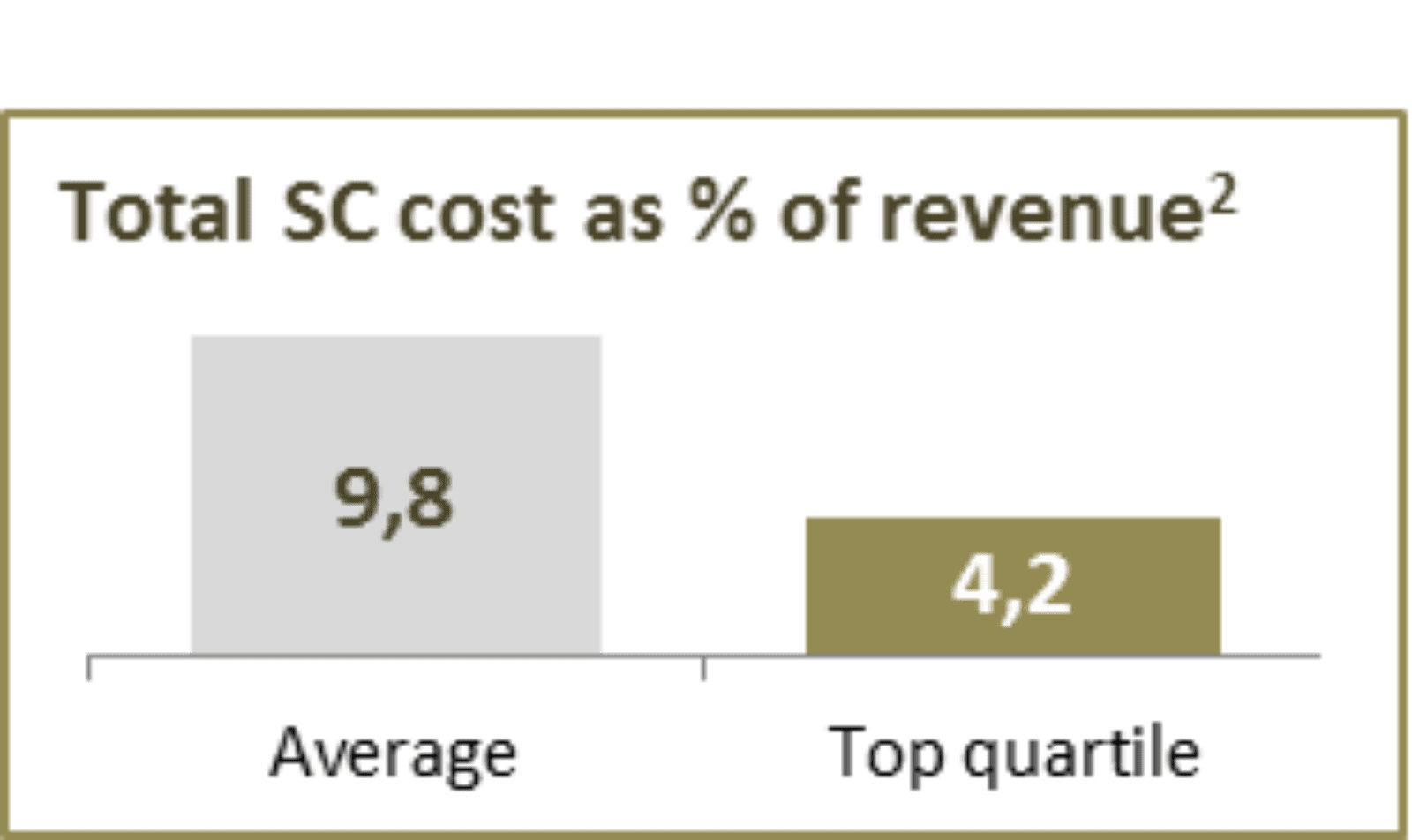
"Companies that see the Supply Chain as a strategic asset achieve 70% higher performance." Sources: 1: Global Supply Chain Survey, PwC, 2013/2: SC Management Benchmarking Series, PMG, 2000

# 6 Refocus on the “Green” Supply Chain
The key Subject?
- Green Supply-Chain
Elements of Understanding
Stemming from a global awareness of environmental concerns, the Green Supply Chain brings together all the initiatives aimed at reducing the impact of commercial activities.
To date, 3 subjects have a constant maturity:
- Gross reduction of the carbon footprint for the process
- Pooling of logistics resources used
- Modal shift of transport needs
Green Supply Chain is Slowly Appearing Among the Concerns of SC Managers
The environment is still far from being the most popular subject, but it has been progressing steadily since the early 2000s following customer expectations for “greener” consumption.
The three trends (4,5,6) exposed above constitute axes of transformation.
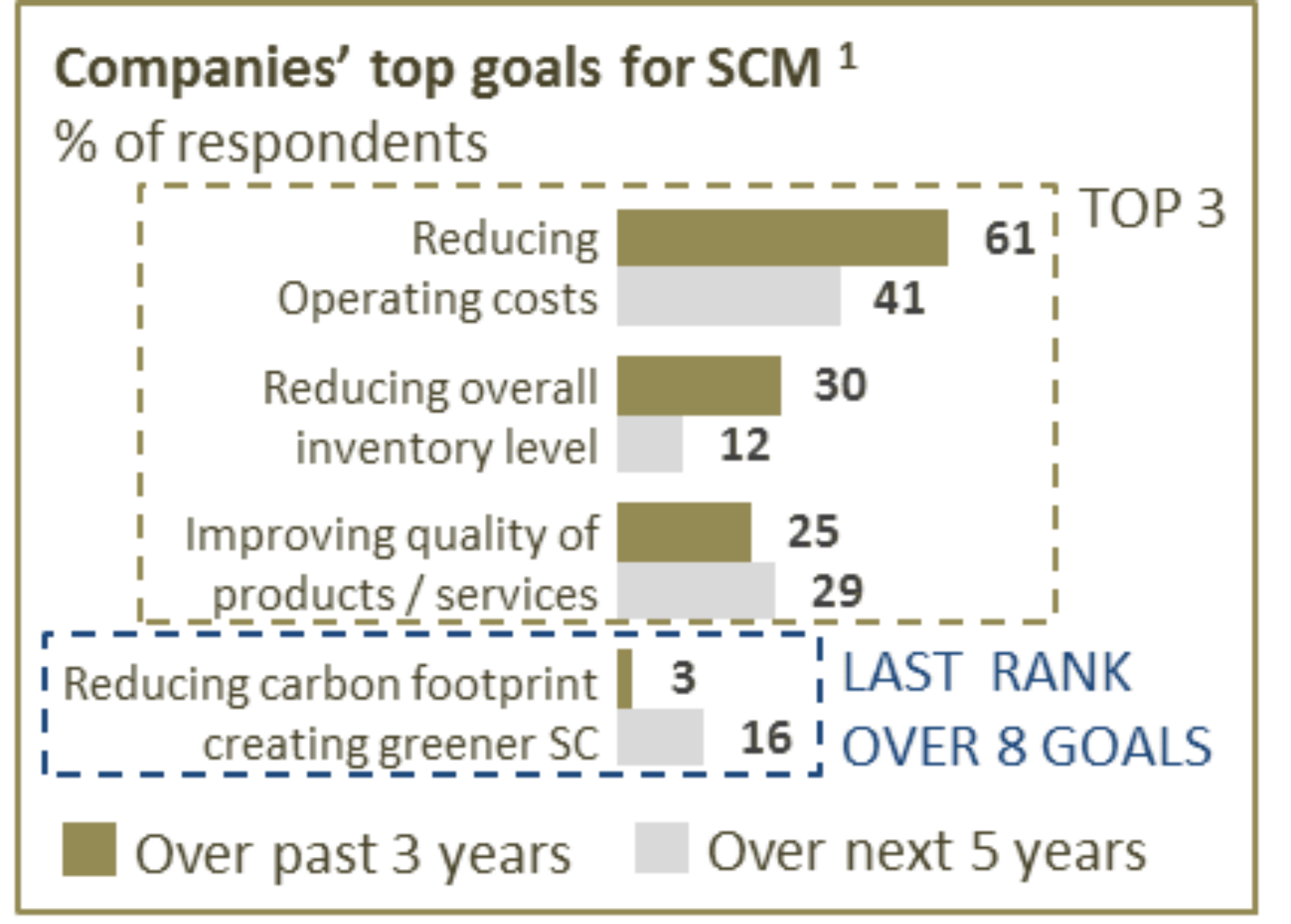
Different areas for improvement have been targeted by companies. Optimizing physical flow is the most promising, supported by different types of initiatives.
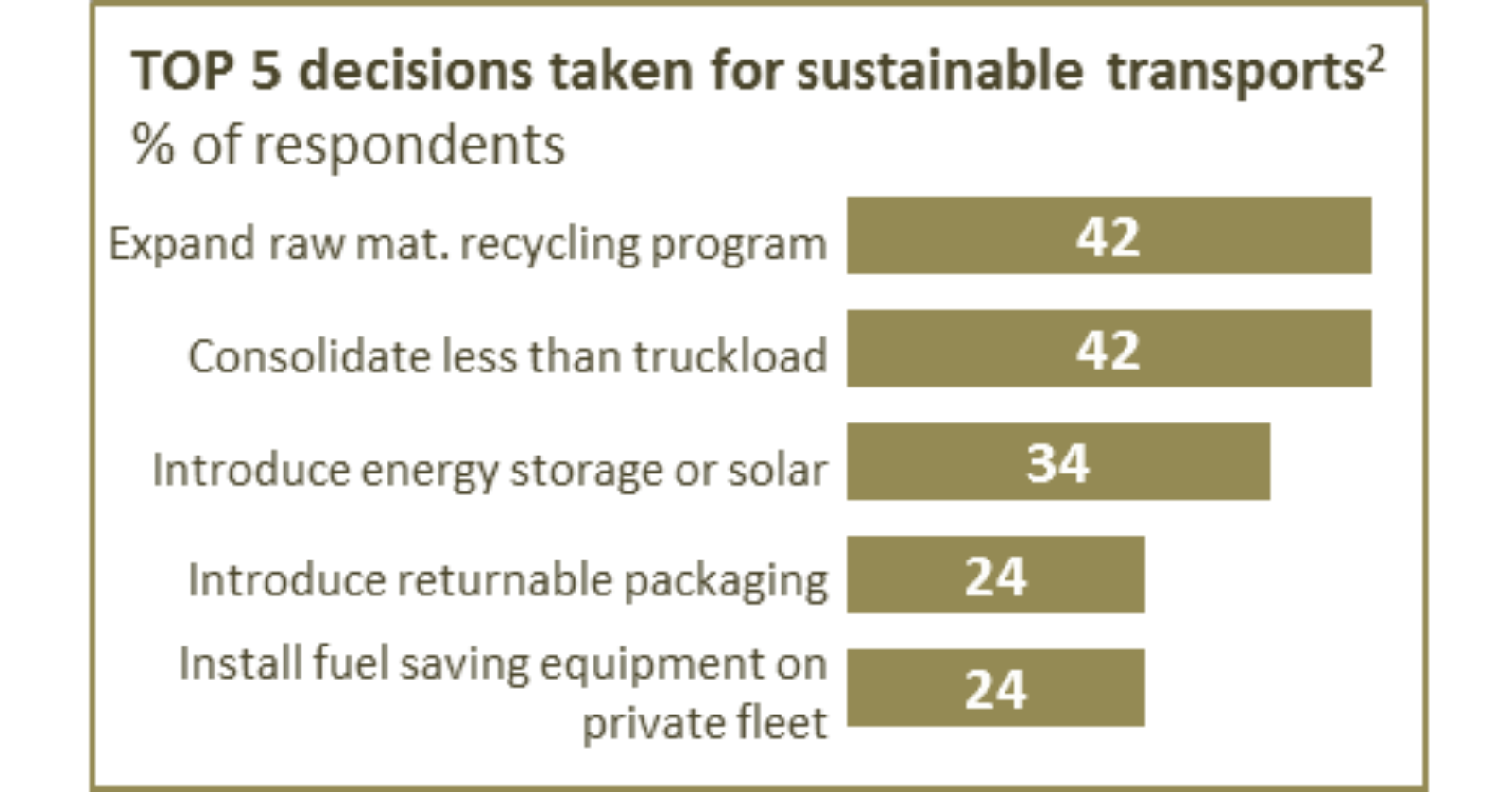
But the concrete applications are motivated by the expected gains on the economic side. At this stage, cost savings are often the driving force behind the implementation of the Green Supply Chain, which explains the relative delay in the implementation of the concept.
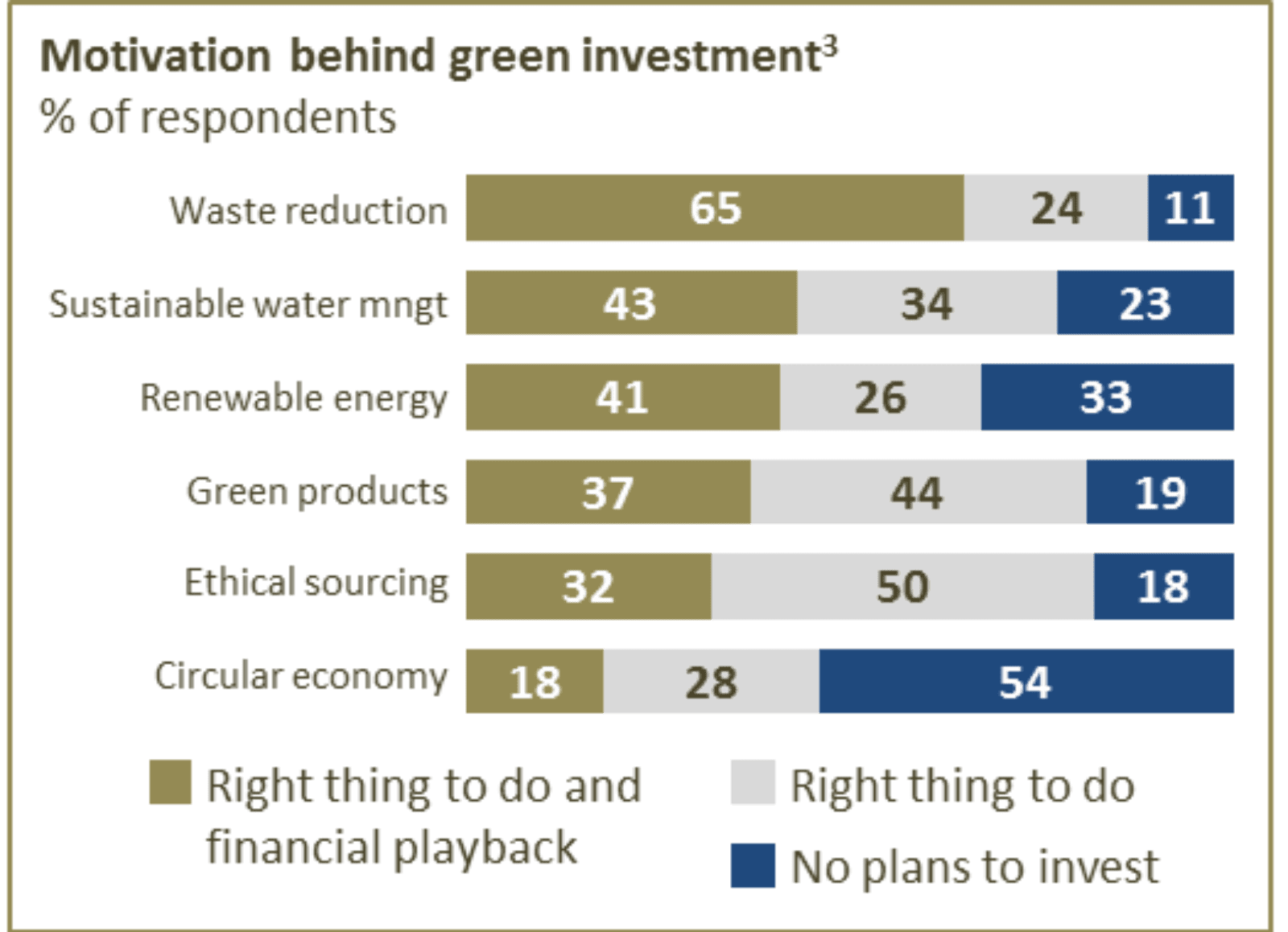
And the nature of business relationships does not tend to new developments.
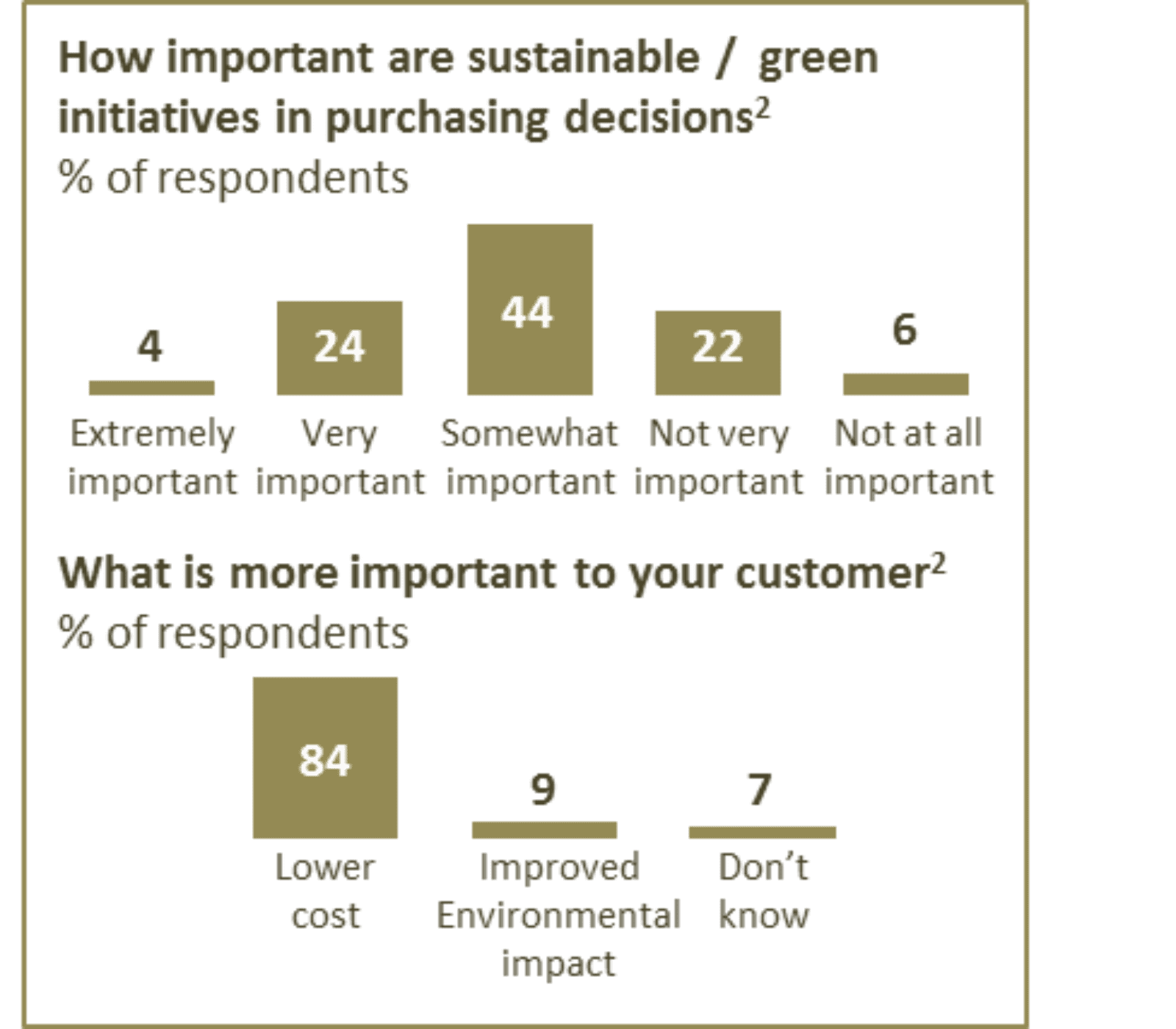
Sources: 1: Global Survey, Mc Kinsey, 2010 / 2: Executive Survey on SC Sustainability, Alix Partners, 2013 / 3: Future of Supply Chain, SCM World, 2015
# 7 Information / Data Control is Vital
The key Subject
- Information
Elements of Understanding
The daily management of Supply Chains emphasizes the need for a more transversal vision of commercial activities. Data processing becomes essential to capture this vision and take the arbitration accordingly. The definition of KPIs (calculation method, scope, target, from top to bottom, …) and the configuration of the dashboard constitute a basis for giving managers the right levers to improve the efficiency of the Supply Chain .
Manual and Outdated Manipulation of Data is Still the Norm for a Large Part of Organizations
Supply Chain managers are largely dissatisfied with the mode used for processing data in their organization. The lack of vision on the activity is very penalizing because it reduces the capacity to understand the activity profiles, the conditions of profitability and to develop response methods for each future scenario.
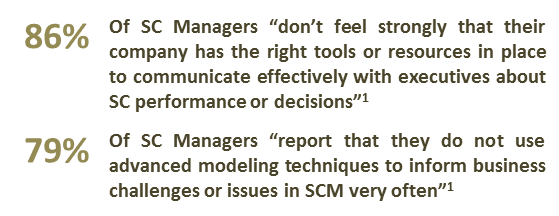
Economic players are gradually investing in this area (with various desires) to catch up
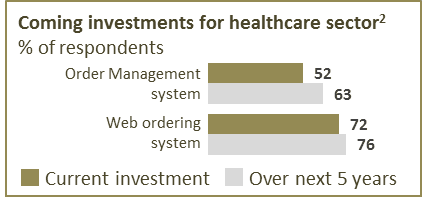
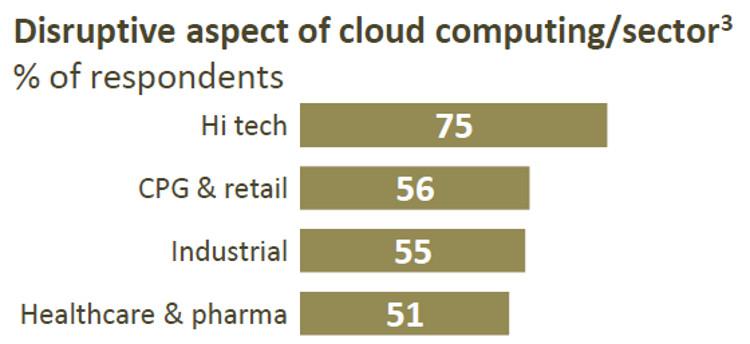
While information systems are now adapted to build a complete vision on the effectiveness of the SC
Basic SC Management exercises and routines benefit from the automation of data processing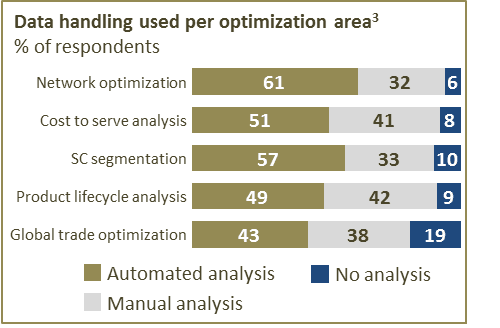
Most advanced players use the information to fully understand performance before taking action
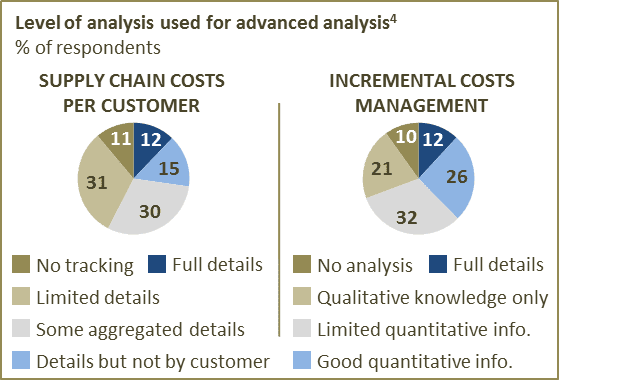
Sources: 1: Supply Chain Impact Survey, Cap Gemini, 2013 / 2: Pain in the Supply Chain survey, DHL, 2013 / 3: Future of Supply Chain, SCM World, 2015 and 2016 / 4: Global Survey, Mc Kinsey, 2010
# 8 Manager's Behaviors Determine the Understanding and Involvement of the Team
The Key Subject
- Manager’s behavior
Elements of Understanding
The good animation of the Supply Chain (systemic approach, customer centricity, combination of good tools / management systems / performance monitoring) relies entirely on the capacity of SC Managers to:
- Create a strategic vision resulting from the business model and impacting the implementation of the Supply Chain
- Align the organization with this strategic vision with a strong emphasis on understanding and engaging people
- Establish and respect management routines that will support performance monitoring and the search for commercial efficiency
SC managers have become the rare birds of modern organizations
The SC Managers must constantly balance their work between the strategic and operational levels, between the profitability objective of the steering committees and the “manual” arbitration requested by the middle managers. In terms of profile, the result is an interesting mix capable of driving transformation plans that come ahead of Supply Chains.
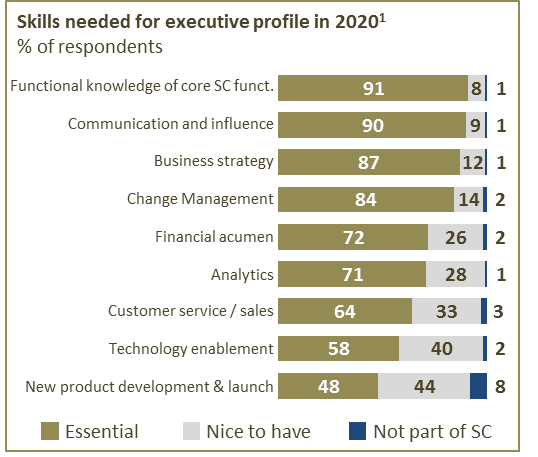
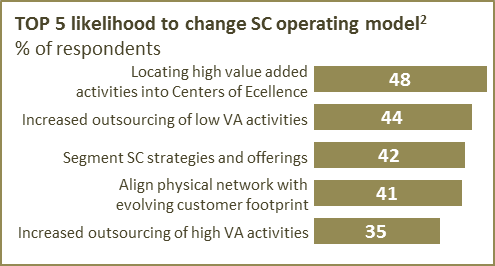
Defining a vision for the Supply Chain at senior management level is a powerful tool
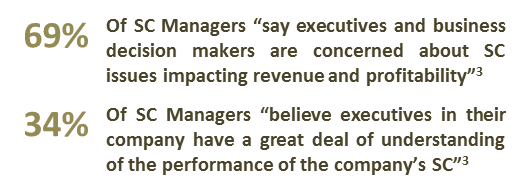
The general notoriety of Top Management concerning the challenges of the Supply Chain is now generally good. But vision on applicable scenarios and understanding of sensitivities is still weak.
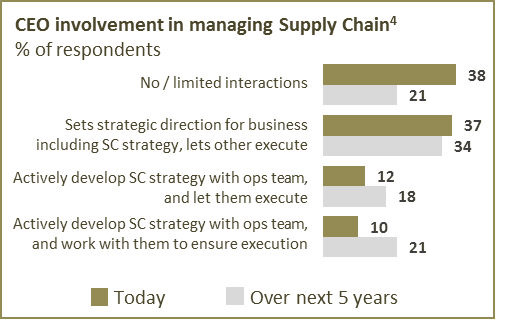
Sources: 1: Future of Supply Chain, SCM World, 2015 / 2: Supply Chain Chain Talent of the Future, Deloitte, 2015 / 3: Supply Chain impact survey, Cap Gemini, 2013 / 4: Global Survey, Mc Kinsey, 2010
# 9 The Imbalance Between the Skills Market and the Needs of the Business Affects the Design of the Organization
KEY TOPIC?
SKILLS
ELEMENTS OF UNDERSTANDING?
Looking at all the functions and positions involved in the Supply Chain, human resource management is inevitably a complex puzzle. Ignored for some time by the management training world, the needs for logistics skills are not fully compatible today.
A situation fueled by the changing environment and new challenges appearing regularly for the SCs.
Supply Chain resources form a combination of several types of skills
Looking at all the functions and positions involved in the Supply Chain, human resource management is inevitably a complex puzzle. Ignored for some time by the management training world, the needs for logistics skills are not fully compatible today. A situation fueled by the changing environment and new challenges appearing regularly for the SCs.
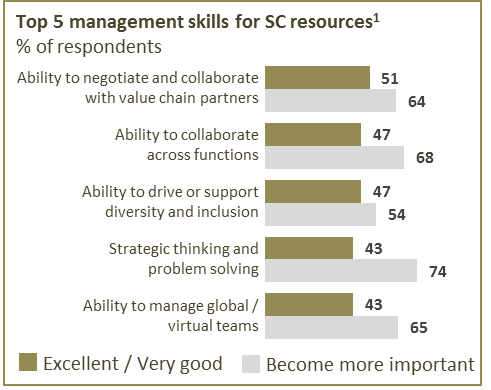
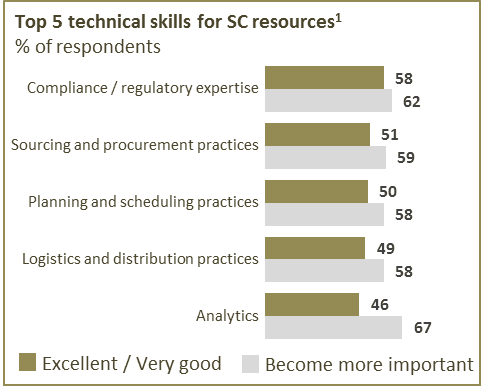
And the acquisition of talent is a difficult exercise
Faced with difficulties in identifying and retaining Supply Chain talent, organizations are adapting their hunting approach
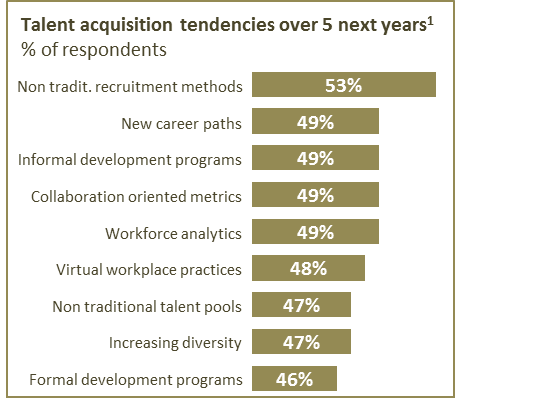

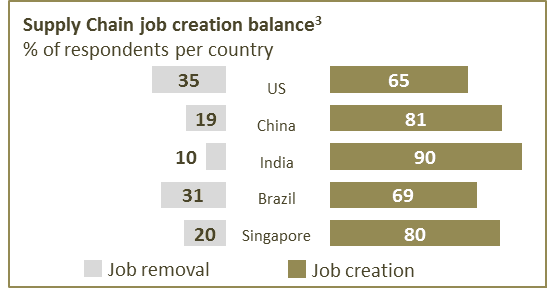
Sources: 1: Supply Chain Chain Talent of the Future, Deloitte, 2015 / 2: Supply Chain impact survey, Cap Gemini, 2013 / 3: Future of Supply Chain, SCM World, 2015
Rapid adaptation is necessary as job creation is increasing in the field of Supply Chain for most markets in the world
